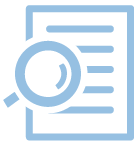Framework for electronic reviews

There are no restrictions for digital post-exam reviews as long as privacy is ensured. The chairs may specify time and date for the digital exam review. During this time, students may review their exam. For detailed regulations on the conduct of reviews, please refer to the Guidelines for Reviews by Division 1.1 - Academic Affairs, Examination and University Law.
1. Password protection
Students may only access their own exam through a password protected course room as is the case with RWTHmoodle. The course rooms require login using the students’ RWTH username and single sign-on password.
Additionally, only individuals who have been automatically authorised for the course room in the RWTHonline sign-in process or have been manually added to the course room by someone with the role “Manager” have access to a course room.
2. Exclusive visibility of the student’s own exam
It must be ensured that students can only access their own exam and results in the review. This is possible through the activity “Assignment” when using single submissions (default option). The grades section only shows the student’s own results anyway.
3. Removing teaching assistants with the role of “Tutor” from the course room
For reasons of privacy protection, individuals like teaching assistants (student or academic) may see neither the exam nor its results. Teaching assistants are usually assigned the role “Tutor" in RWTHmoodle. Users with this role can access all files and results of assignments. This is authorised for in-semester assignments but not within the context of publishing and grading the exam. Thus, if there are any teaching assistants with this role, they must be removed from the course room ahead of publishing the exam and its results.
4. Objections to the results
Any objections may be submitted via e-mail within a period specified by the corresponding chair. They will be answered in the same way unless the students specifically request a written decision.

Related content:
Guidelines for Reviews by Division 1.1 - Academic Affairs, Examination and University Law

